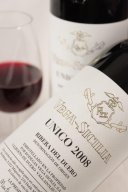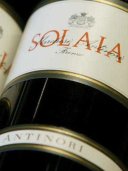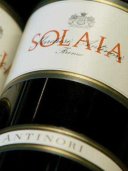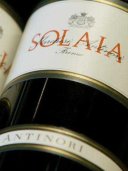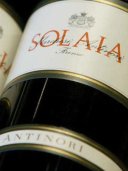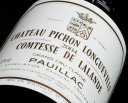$100 and over
Vega Sicilia Unico
Maya
Moss Wood Cabernet Sauvignon
One of Australia's icon wines, this is Cabernet at its very best. This wine is the very definition of power and elegance. Hand crafted by Keith Mugford and his team in the Margaret River, Moss Wood deservedly fits in the Exceptional category of Langton's Classification of Australian Wine.
Penfolds Bin 407 Cabernet Sauvignon
Penfolds Bin 407 began life back in 1993 with the release of the 1990 vintage Cabernet Sauvignon. Created as a result of the availability of high quality Cabernet fruit, Bin 407 is inspired by its older brother, Bin 707. Not only offering varietal definition, but also approachability, structure and depth of flavour. The Bin 407 highlights the Penfolds approach to multi-region, multi-vineyard blending to create a Cabernet that rewards the drinker in both early and later years.
Tenuta San Guido Sassicaia
Based on Cabernet, Sassicaia is one of the first Italian reds to be made in the image of Bordeaux. In the late 1990s Sassicaia was granted its own DOC, the only wine from a single vineyard to enjoy this privilege.
Solaia
Opus One Napa Valley
This features currant and plum fruit, with tobacco, loam and singed savory notes, maintaining range and driving through the finish. The structure is fine-grained, delivering a lingering hint of acidity. A more subtle expression of Cabernet. Cabernet Sauvignon, Petit Verdot, Merlot, Cabernet Franc and Malbec. Best from 2022 through 2036. 27,800 cases made. Wine Spectator 93 Points
Chateau Pichon Longueville Comtesse de Lalande
Mayacamas Vineyards Cabernet Sauvignon
MAYACAMAS VINEYARDS Cabernet Sauvignon, Napa Valley Not much has changed by way of production since Bob Travers started the Mayacamas estate in the early 1940s. The fruit is handpicked early, often in early September - abvs usually end up between 13 and 14 percent to preserve natural, altitude derived acidities. Fermentations occur predominantly in open-top cement vessels which were built in the 1950s, again to preserve acidities and vibrant fruit character. Extended ageing occurs exclusively in neutral oak some as old as 100 years typically for three years which allows the vineyard's expression to shine through the powerful fruit profile, while also minimising oxygenation and helping to maintain the powerful and tight tannin structure Mayacamas is so famous for. The wines then usually spend a further two years in bottle before it is ready to be released to the market. Mayacamas make wines that lie in stark contrast to the more prevalent rich, heavily oaked, high in abv, bombastic wines that are common in the Napa Valley.
